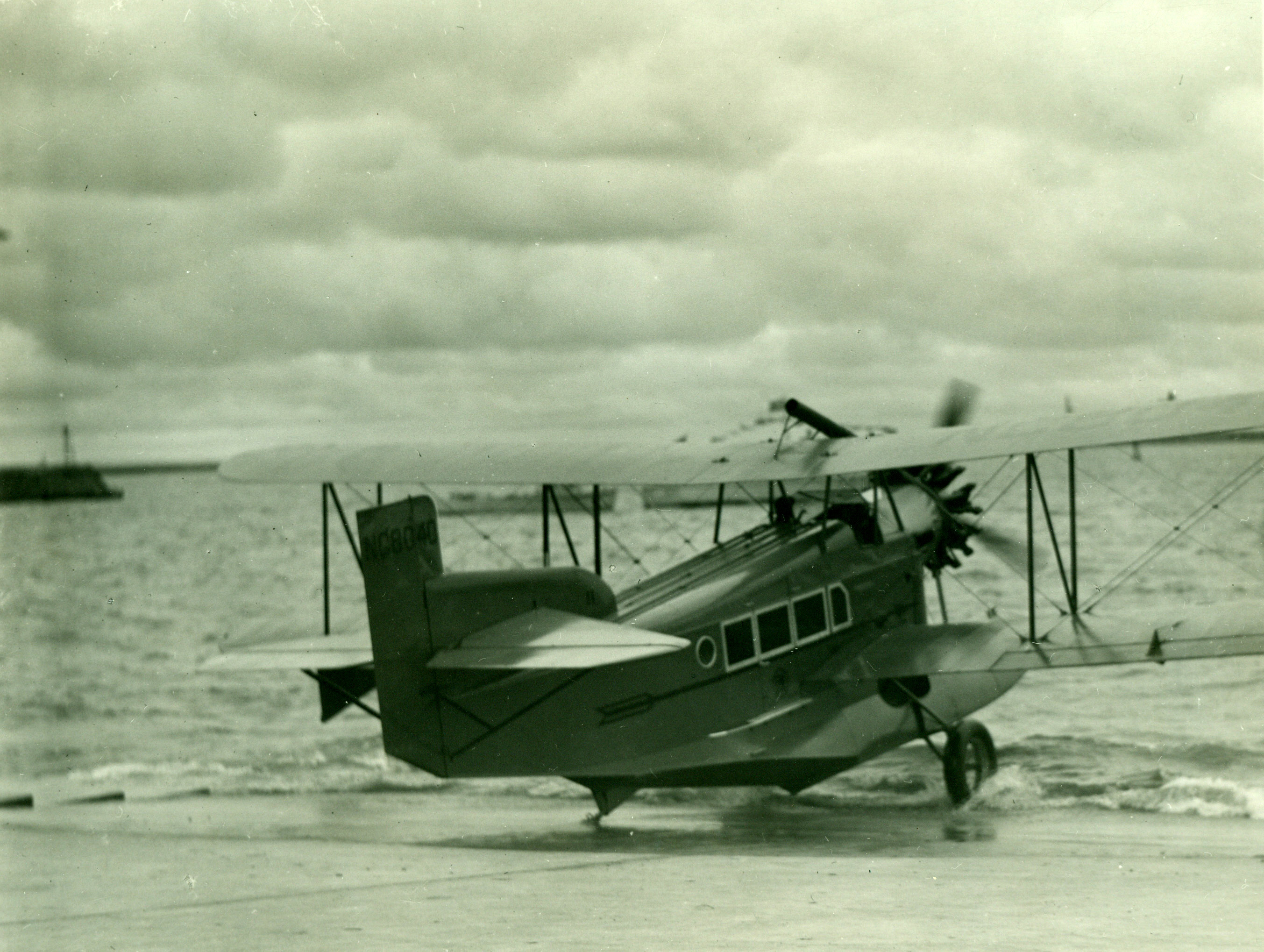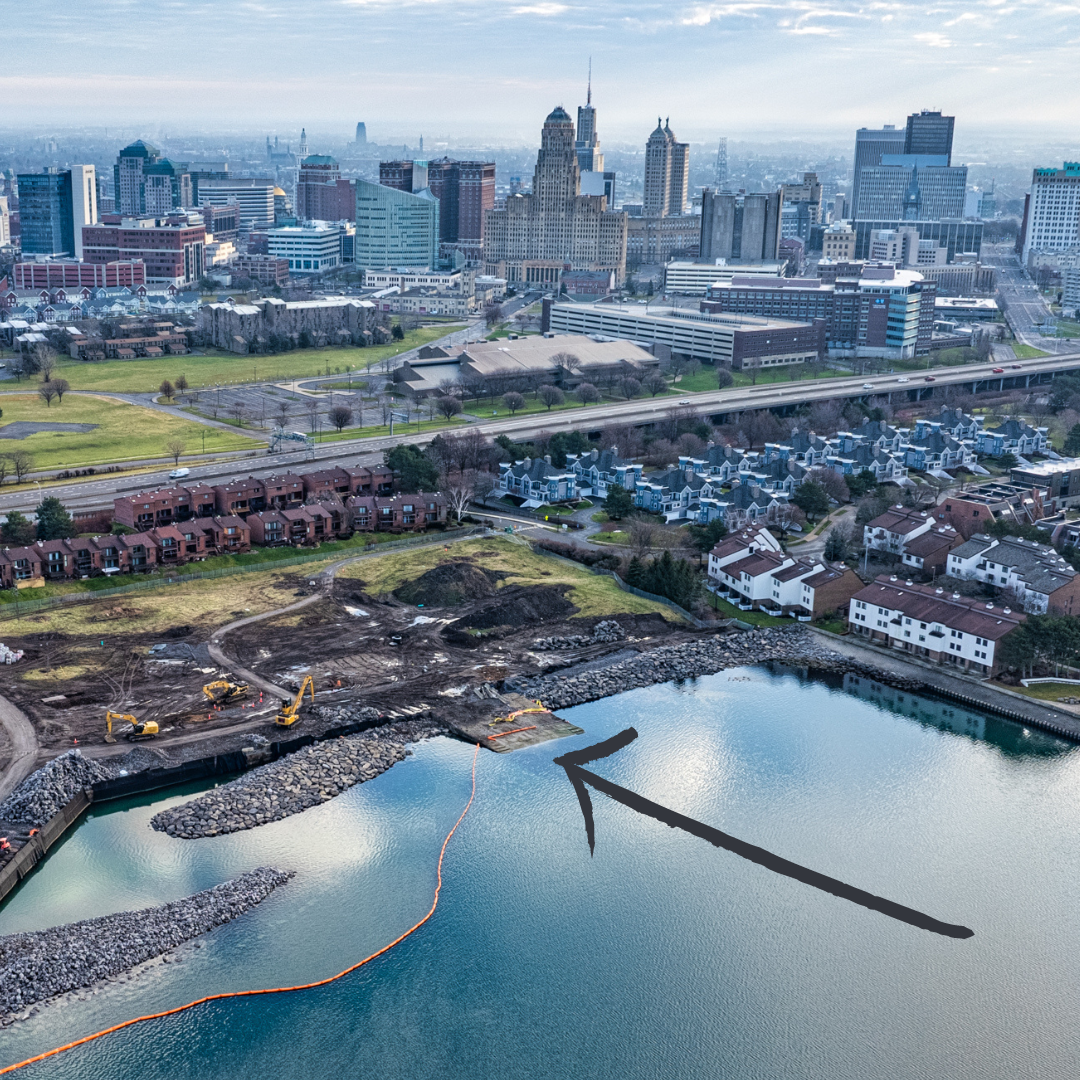
On a summer Sunday in 1932, Navy planes and a 21-gun salute dedicated new marine airport facilities at the Buffalo waterfront. Naval Rear Admiral F.R. Lackey stood on the sloping apron of the seabase to deliver remarks:
“Your geographical position here makes Buffalo a natural terminus for all seaplane traffic on the Great Lakes. The building of this airport is evidence that Buffalo does not intend to relinquish her position with respect to aviation.”
The new airport was labeled “another step forward in Buffalo’s history” and amidst the fanfare, a plane took off carrying Governor Franklin D. Roosevelt to the Democratic convention in Chicago, to receive his presidential nomination.
The marine airport was built to make Buffalo one of only a few communities in America with docking and maintenance facilities for overwater aircraft. Despite the ceremony in 1932, the marine airport had already been open for a few years. The first plane to leave was in April of 1929. Then in June, a Giant Sikorsky Amphibian docked on a hastily constructed ramp to pick up 10 passengers for the inaugural Buffalo – Toronto flight.
By fall 1929, plans to construct two hangars, an administrative building and a 120 foot-long concrete ramp at the marine airport were brought to the city’s finance committee. The plans, design, and budgets were then debated for almost two years. In April 1931, a revised plan focused on just the landing facilities was approved. Construction finished in time for the base to be dedicated during the Centennial Celebration of Buffalo, held at our park.
The marine airport had grand plans for the future. The city of Buffalo was looking forward to daily fares to Europe, as well as a place for companies like Consolidated Aircraft Corporation to launch the flying boats, naval planes, and other aircrafts they designed. Despite all the excitement, the airport was not an overwhelming success in the years that followed. In 1935, the Buffalo Evening News reported the marine airport lay unused:
“Out in the vanguard of a movement to utilize rivers, harbors, and lakes in an attempt to bring aviation to the very doorstep of American cities, Buffalo has a marine airport which apparently no one wants to use”
So what happened? First, the Buffalo weather was more restricting than perhaps anticipated. While the airport was always intended to close during Buffalo’s icy winters, it had a bigger than expected impact. On March 29th, 1933, The Buffalo Courier Express shared how a number of seaplanes had been landlocked by ice in the 1932 season, when ‘spring turned back into winter again’. Likewise, efforts to expand the facilities to include much-needed structures, such as hangars and repair equipment for planes damaged during storms, were not moving forward. The City Council were hesitant to put more money towards the unused airport, while the Commissioner of Public Works insisted it would remain unused until funds to complete the facilities were approved.
Aside from weather and politics, the changing strategy of the aviation company Consolidated Aircraft Corporation, a major client the facilities were being built for, had a big impact. After completion of the seabase, the company shifted their plans to use it, choosing to use the city airport instead. Then in 1935, they moved their entire operations from Buffalo to San Diego. Use of the seaplane ramp was very limited after that.
In the end, dreams of Buffalo’s prominent place in the maritime aviation industry were not realized. Today, the seaplane ramp (highlighted in photo at right), which many have seen but few realize its place in history, remains a reminder of the short-lived Buffalo Marine Airport.

Despite its shortcomings, the seaplane ramp is part of the heritage of the park. It would be a mistake to only celebrate the parts of history that feature a glorious success story. Even the great Roman Empire, with all its architectural successes, has a lesser-known history of unsuccessful civic experiments. To only amplify the parts of the past deemed ‘great’ is to know an incomplete picture. Experiments do not always pass with flying colors, but that doesn’t mean we should sweep them under the rug. What we inherit from the past, and assuredly what we pass on to the future, will be a complex story. Both great and not-so-great ideas can thrive or flop depending on a tangle of circumstances unforeseen by the idea’s creator. Giving even the not-so-successful stories attention is important. Very important in fact, as research on failure indicates sharing actually cultivates relationships and promotes innovation.
We are human after all and ours is a human story. Humans built this park. Humans influenced it in many ways over its century as a public greenspace. And humans are coming together to create its newest form. Not every action of our historical predecessors succeeded, but those actions are part of the park’s heritage none-the-less. As we move forward with the next life of this urban space, both roaring successes and fizzled missteps from history show the fascinating heritage of the Buffalo waterfront.
Photo: the Boeing Amphibian, the first plane to leave Buffalo Marine Airport after dedication on April 3, 1929. Collection of The Buffalo History Museum. General photograph collection, Transportation – Air
All of the Heritage Engagement Project blog posts, written by Dr. Kathryn Grow Allen, are now in one spot. Check out our HEP page for past and future reading on heritage-building at Ralph Wilson Park.









